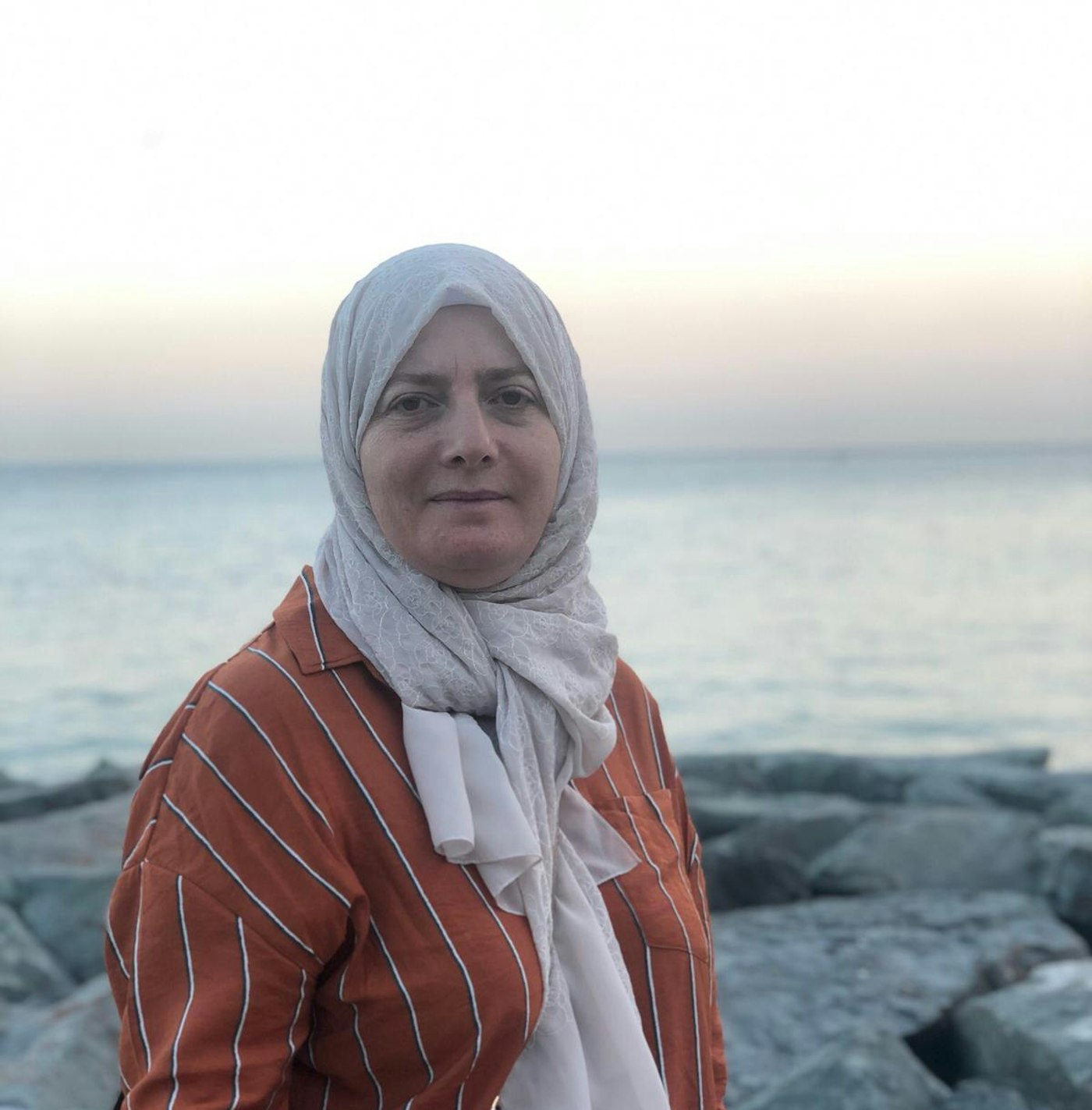‘What Do You Think of When You Hear Syria? ’ – Marking 10 Years Since the War in Syria
by Amaliah Team in Culture & Lifestyle on 6th March, 2021
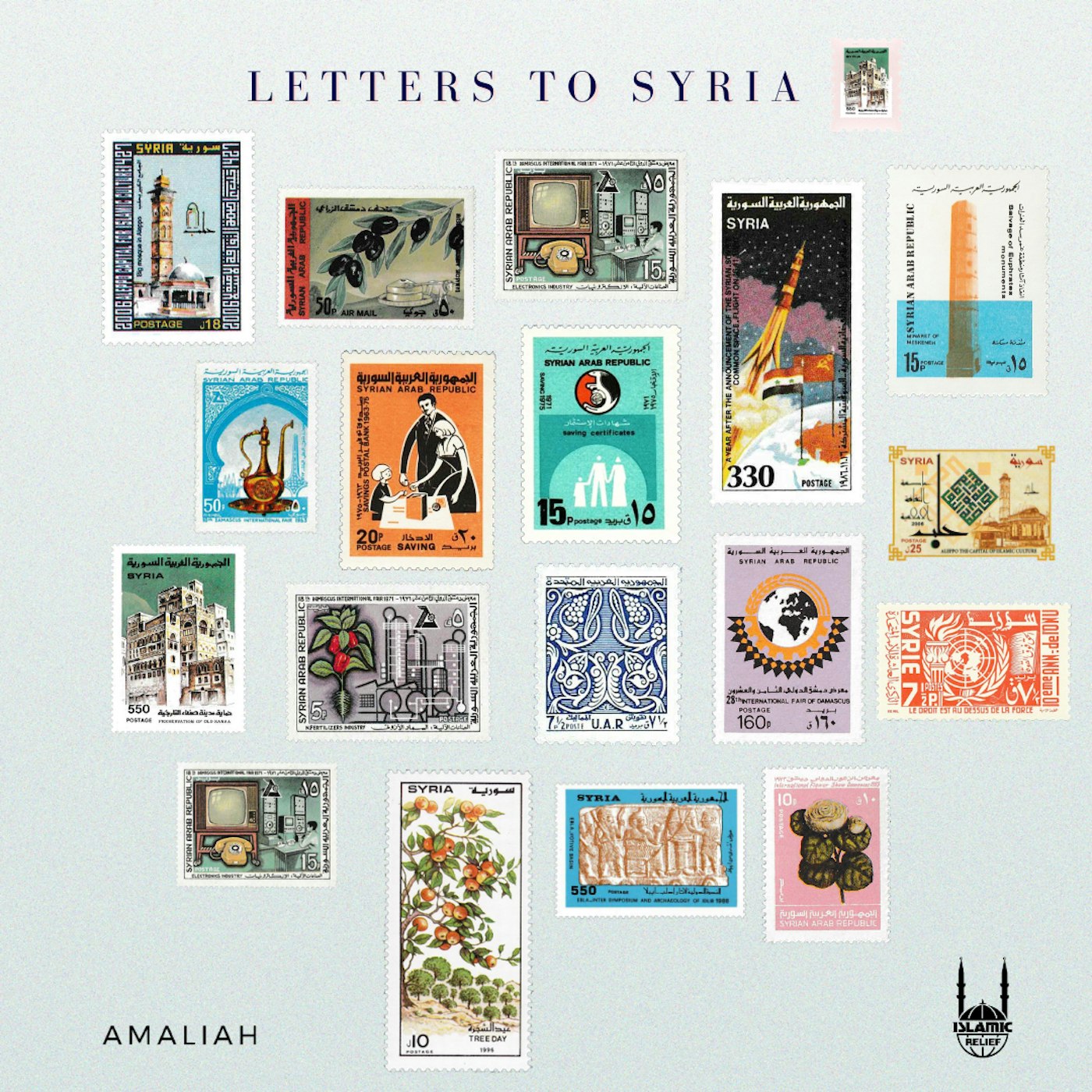
What do you think of when you hear ‘Syria’?
It’s likely that you conjure up images of destruction, war and rubble. This is the image of Syria that has been pushed to the fore as it enters its 10th year of war and conflict seeing more than 5.5 million flee and at least 11 million in need of humanitarian assistance.
Syria continues to be at the forefront of many of our minds but for many Syrians, the memories they hold of a pre-war Syria and the ties they have to the country stand in stark contrast to the current reality and images of Syria we see today.
To mark the 10th anniversary of the Syrian revolution and the onset of war in the country, Amaliah has partnered with Islamic Relief to honour the personal memories of three Syrian women. Each person involved in the project has maintained ties to Syria, in their own way, whether it be through archiving, documenting or reimagining Syrian heritage, culture and history.
This article is in collaboration with Islamic Relief who have been responding since the onset of the Syrian crisis, and from January to December 2020 was a lifeline for over 2.5 million vulnerable people in Syria. You can find out more about their work on the ground by clicking here.*
The Syrian Stamps Archive
Design studios are probably the last thing on your mind when you think of the conflict in Syria, and of the many schools, lives and cities that have been destroyed as a result of the war.
But for a collective of architects, the loss of Syrian design, art and art spaces in the conflict, and the lack of information out there on Syrian designers posed a great threat to Syrian culture. They decided to come together to archive examples of Syrian typography and design in an effort to preserve Syria’s rich artistic heritage. The collective has grown considerably since its inception and now has four archives which collate and archive Syria’s street signs, stamps, print and media.
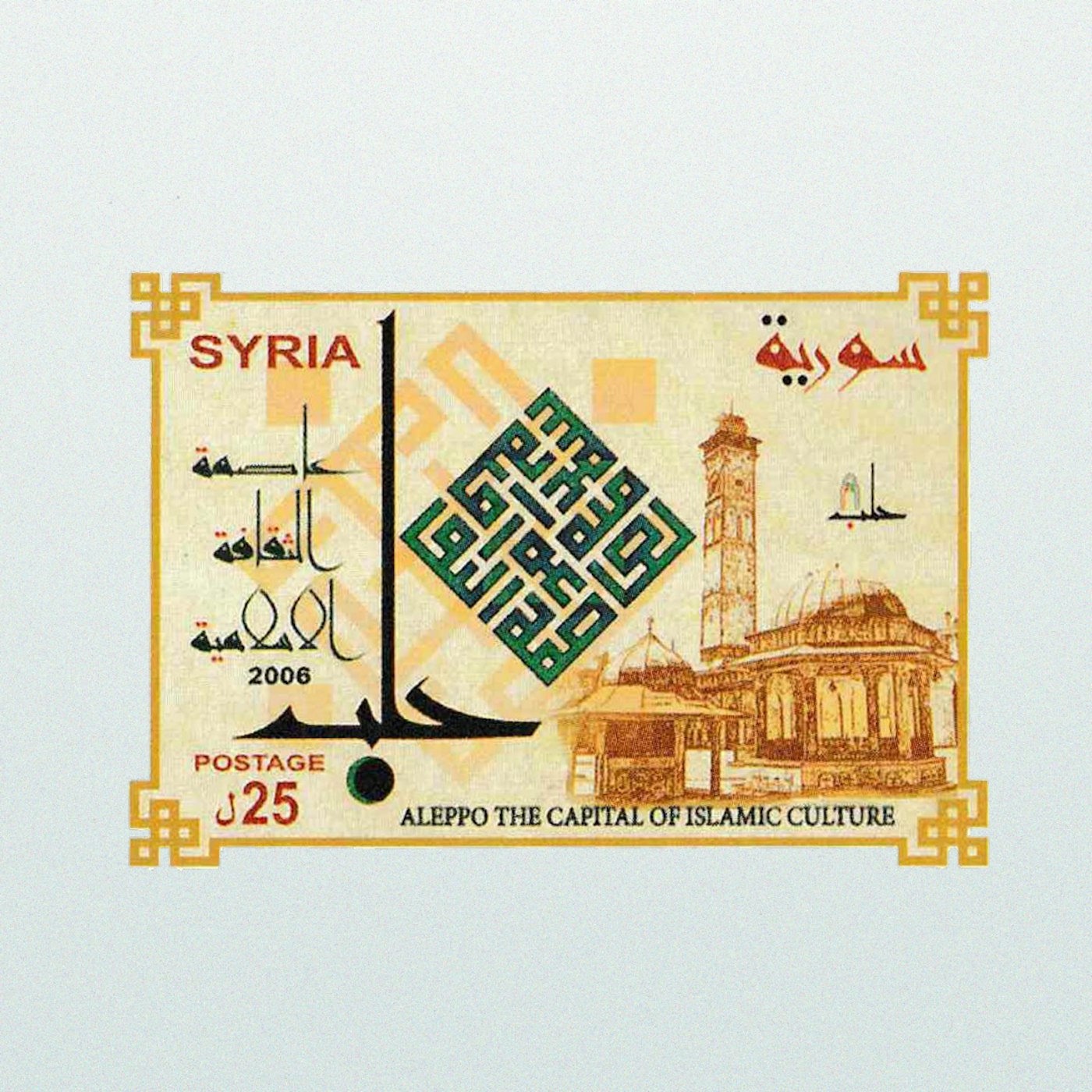
A Syrian stamp issued in 2006 to celebrate Aleppo’s designation as the Arab world’s capital of Islamic culture for that year. The stamp depicts The Great Mosque of Aleppo alongside kufic calligraphy.
The collective is made up of 3 women: Kinda Ghannoum, Hala Al Afsaa and Sally Al Assafen. Many of the stamps are from Kinda’s personal archive that she has been collecting since she was 9 years old. Some of her favourite stamps depict Syrian crafts and folk tales as well as Syrian agriculture and other prominent industries.
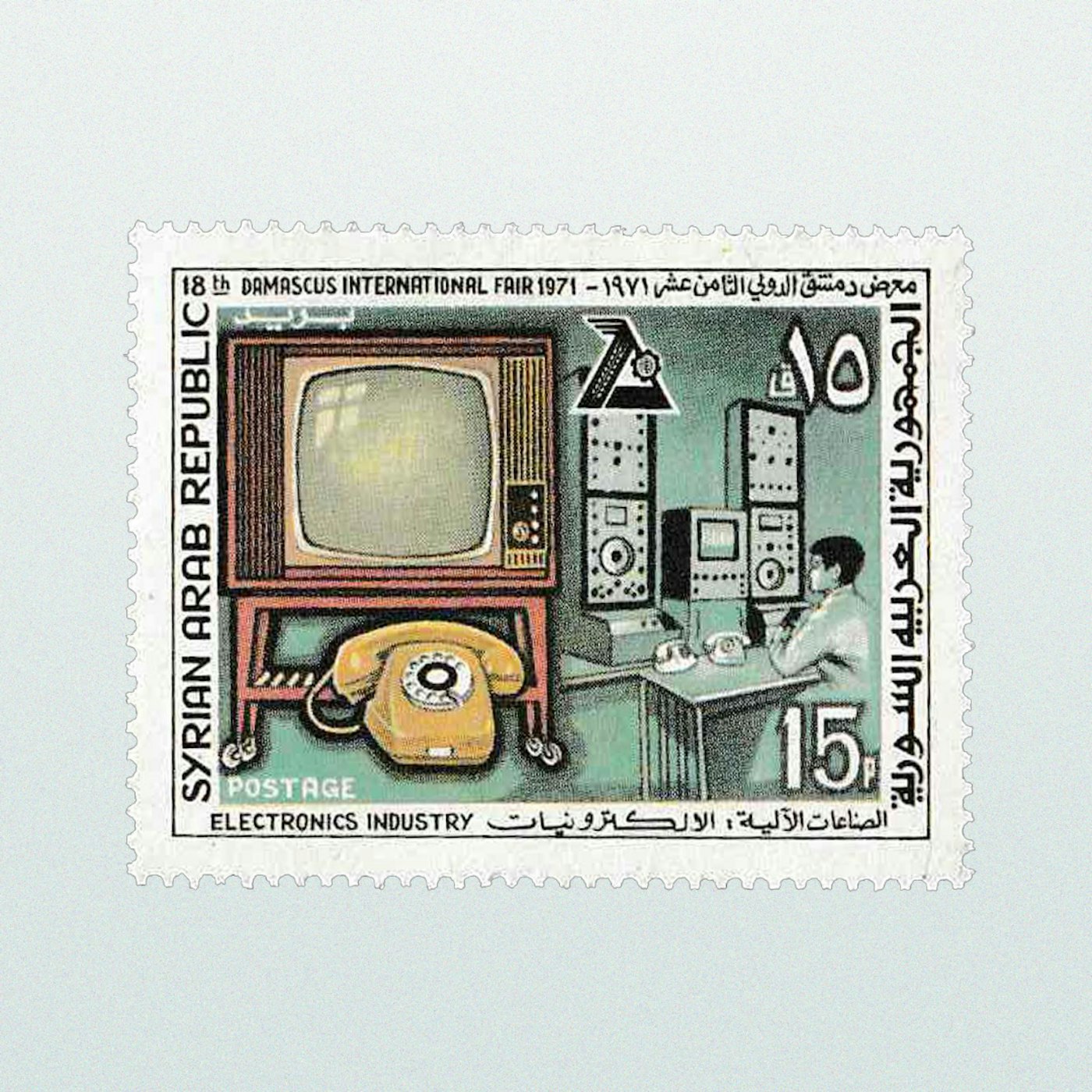
A Syrian stamp issued in 1971 to mark the 18th Damascus International Fair and to celebrate Syria’s electronics industry.
Kinda was fascinated by the designs and the colours of these stamps and would find herself going to her local store to buy new ones any time she got pocket money or had savings. Her stamp-collecting journey also saw her cross paths with the ‘Syrian Stamp Club’ in Syria who helped her unearth more information on the meaning, history and design of each stamp in her collection. Some of the stamps date back to 1919; before this, Syria did not have its own stamps and instead used the stamps of the Ottoman Empire from 1883. Some of the stamps date back to 1919; before this, Syria did not have its own stamps and instead used the stamps of the Ottoman Empire from 1883. Most of the stamps were printed through the Offset printing or Lithography printing methods in which an inked image is transferred from one surface to another. While the majority of the stamps were printed in Damascus, some of the older designs were actually printed in Lebanon and France as well as various other countries.

A stamp issued in 1969 to commemorate the 8th Anniversary since the opening of the Agricultural Museum in Damascus. Olives are one of the main crops grown in Syria.
“Archiving is important because we are losing history, we are losing information and during the war there are a lot of places where designers’ studios were destroyed and all that it had, so it is important to archive to save our history. We don’t have any information about the designers in Syria so we started this initiative to make the new generation aware of our history and about our designers.”
– Kinda Ghannoum
Kinda was inspired by Syria’s rich design history. Some of her favourite Syrian designers include Abdulkader Arnaout who designed more than 600 posters and around 300 book covers, Mouneer Al-Shaarani, a calligrapher and writer who has designed several custom typefaces and who is highly regarded internationally for introducing innovative calligraphic styles, and Burhan Karkutli who specialised in graphic art and illustrated popular folklore tales and images of everyday life in Syria and Palestine through his work.
The group specifically set out to work on Arabic typography as they felt it holds a lot of meaning and highlights a common theme and unity across Middle Eastern cultures. They also found a lack of archives and references that document the forms and use of Arabic typography, specifically Syrian typography, which they have tried to remedy through their work.
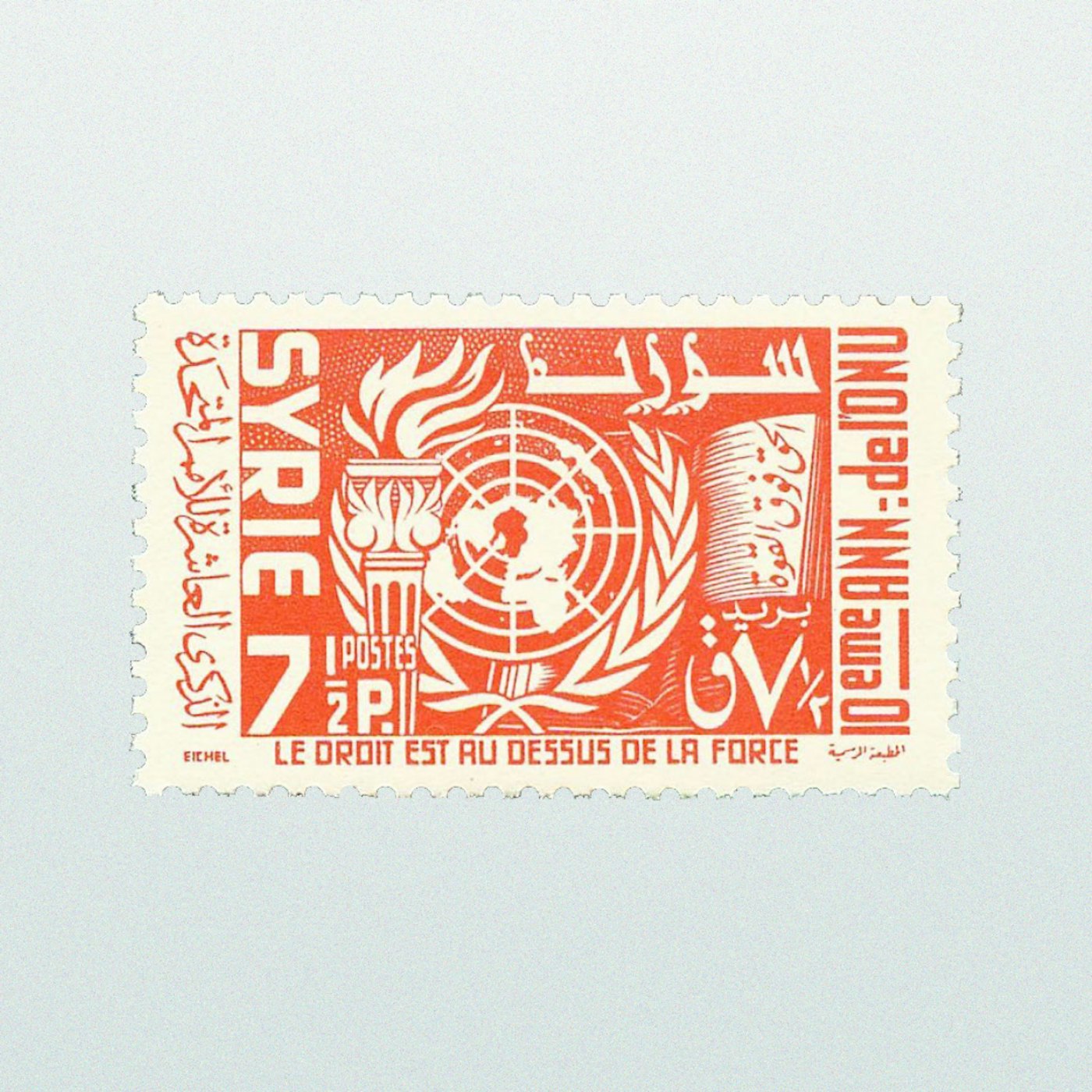
A Syrian stamp issued in 1955 to mark the 10th anniversary of the United Nation’s establishment.
Their hope is to continue the archives as a memento for the next generation and to preserve a part of Syrian culture and heritage.
Keeping Ties Through Food
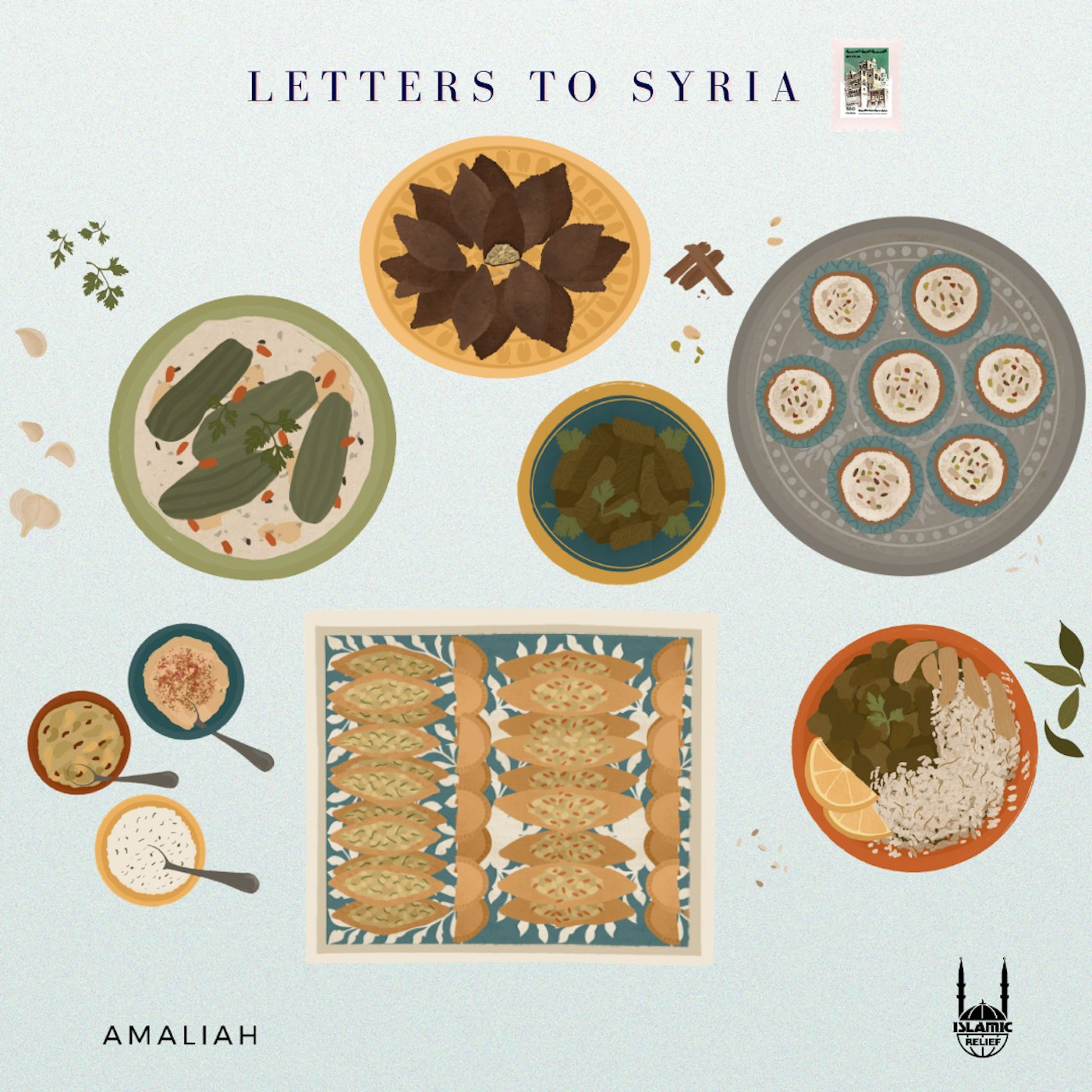
“Syrians became scattered all over the world after the uprising turned to a war, but many have opened restaurants and added from our culture to the communities and societies that they are new to”
– Nada Kordi
Recipes, like languages, have a way of spreading to all corners of the world. Nada Kordi left Syria for the UK in 1985 after getting married and moved to the UK at age 18. The UK then became her home in which she lay her roots. She would continue to visit Damascus and Homs until the start of the Syrian revolution in 2011. Nada is now 53 and in her interview with her daughter, Ranya Alakraa, she tells us about her own food memories with the family and the ones she has made here in the UK.
Ranya: Where did you grow up?
Nada: We had a farm in Homs where we would grow our own crops and vegetables, on a weekly basis someone from the family would go from Damascus to Homs and back and we would get some fruit, vegetables and milk from our farm.
I used to spend my summer holiday in our home in Homs which was in a village called Jobar. Where my grandparents grew vegetables and crops, they had lots of cows and sheep too. This was my summer holiday every year, playing and working on the farm in Homs. I would go out with the workers to harvest the vegetables, help my grandma to milk the cows and make fresh butter. We would make fresh bread and my grandma would put butter on the bread with sugar and feed it to me and my siblings as a treat.
Every year we would have a special season where we would dedicate a few days to making certain foods to stock up for the year, things like pickles, tomato puree, cheese; we would preserve these in jars for the yearly stock.
Nada Kordi runs her own page on Instagram where she shares recipes for traditional Syrian dishes
Ranya: How is food important to your Syrian identity and ties to Syria?
Nada: Food is important to my Syrian identity and my ties to Syria as I moved in 1985 to London as an 18-year-old not knowing the English language, so I kept the same tradition of food that I learnt in Syria. I learnt other dishes too of course, and the first books I borrowed from the library in London were cooking books.
I would translate the recipes word by word. I loved food and cooking food and learning new recipes, and I preserved this love for food in London by making Syrian dishes. It was like keeping a little Syria alive inside of me.
I would call my mum and ask her for help and instructions. There were also not many Syrians around at the time so I would cook for my non-Syrian guests and visitors and they would love the food. I kept the same traditions for my guests, cooking them special dishes like many different types of ‘Kibbeh’ – spiced ground meat and pine nuts encased in a shell made of a mixture of bulgur wheat, onions, and ground beef – and stuffed vine leaves. It was difficult to find some of the ingredients at the time but when I would travel back to Syria, I would bring some ingredients with me to London so I could keep cooking my traditional food.
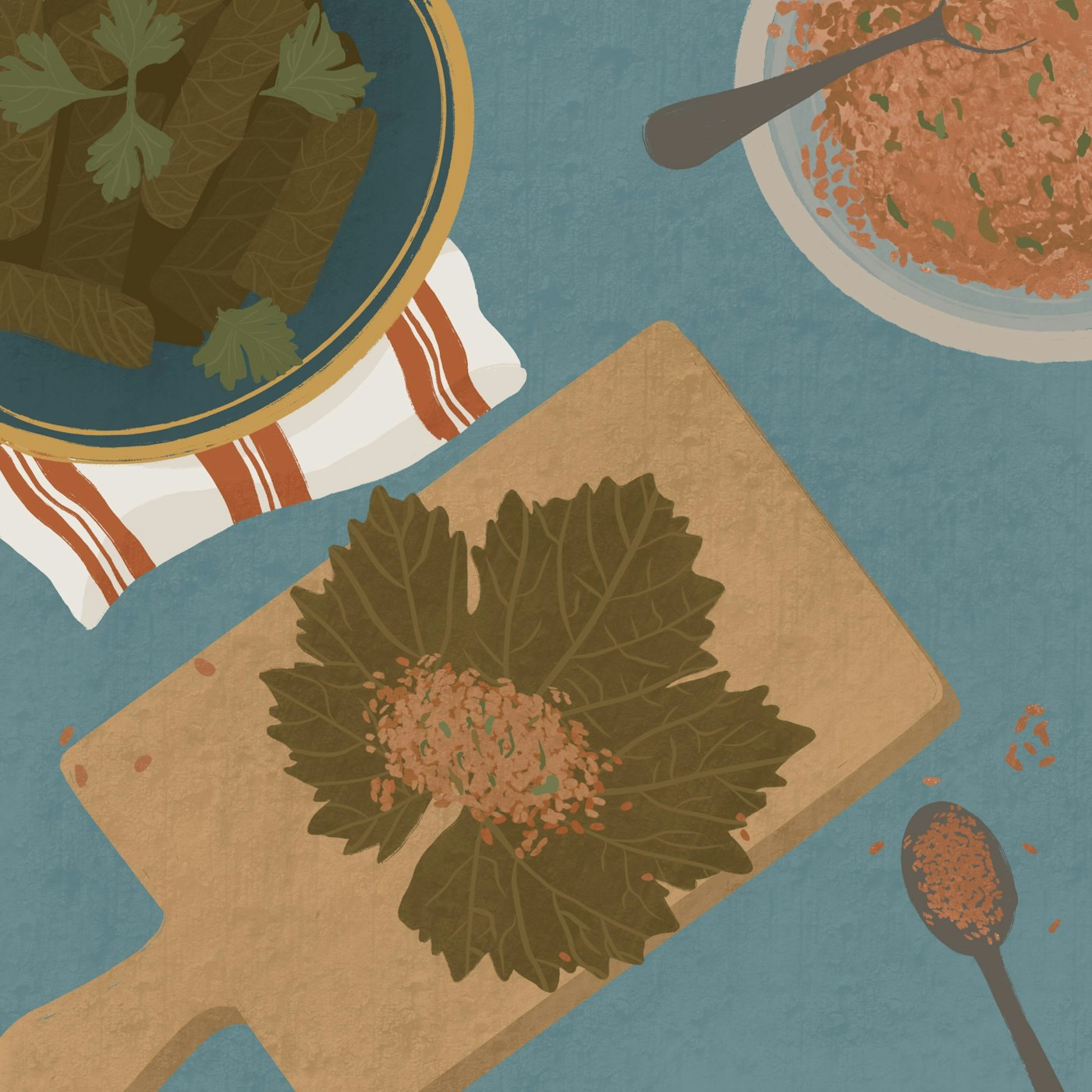
Stuffed vine leaves are a traditional Syrian dish served at Syrian gatherings.
Ranya: Who did you learn to cook Syrian food from? Can you tell us a bit about them? What was one of their signature dishes?
Nada: I learnt to cook Syrian food from my mother who was a housewife and was a great cook; she inspired me! I loved the kitchen, helping my mum and just being around her when she cooked. She made everything from scratch at home. Her signature dishes were her stuffed courgettes and vine leaves, and ‘Shakriye’ – a warm yoghurt sauce with meat. She would also make us stuffed lamb intestines. She was good at everything when it came to cooking.
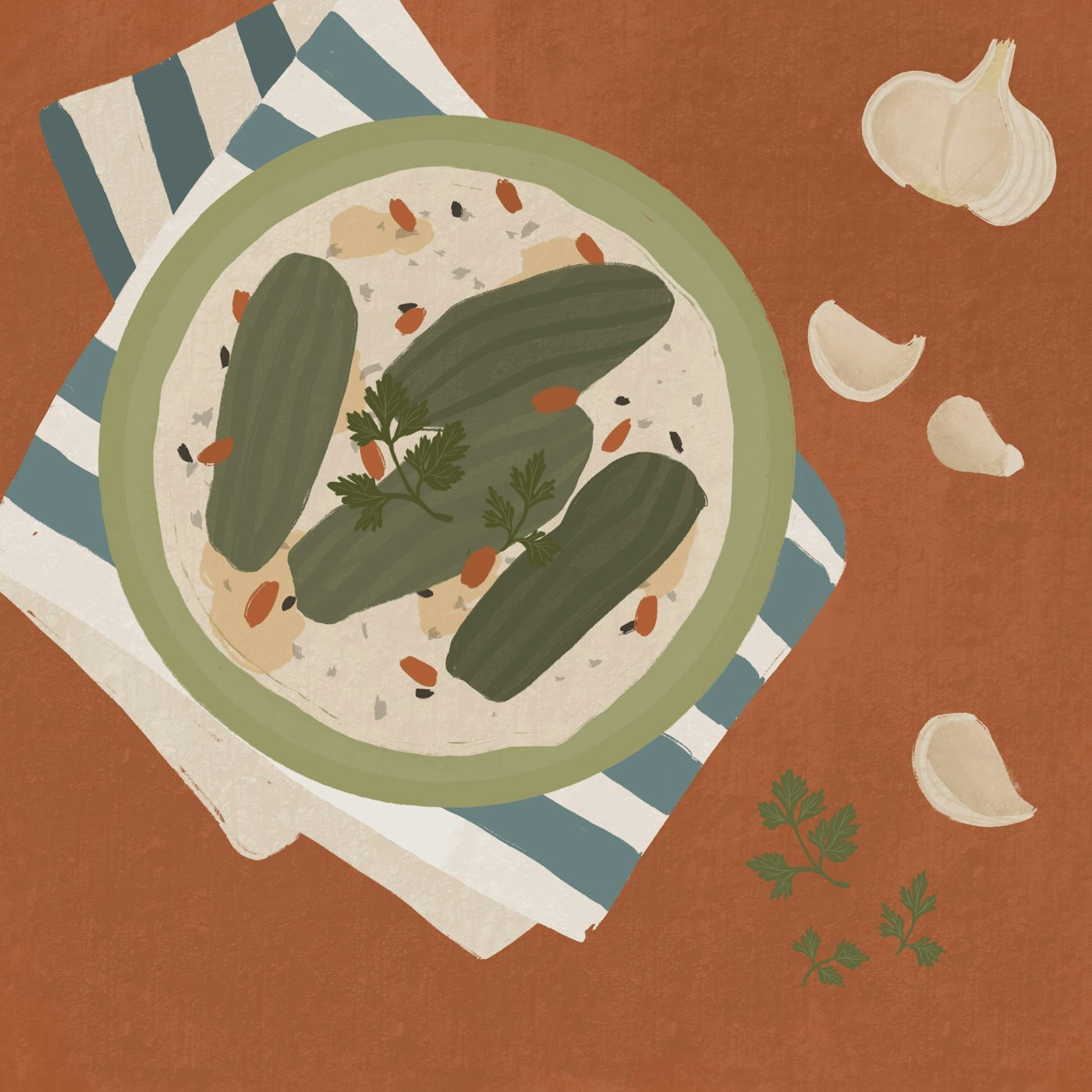
Stuffed courgettes in a yoghurt sauce garnished with pine nuts, a dish eaten in many Syrian homes.
Ranya: Which Syrian dishes do you prepare for gatherings/celebrations? What is the significance of these dishes to Syrian culture? Could you tell us perhaps what you had at your own wedding and how this was celebrated?
Nada: For gatherings, we usually make some kind of stuffed vegetables like vine leaves, courgettes or aubergines. We also make ‘Shakriye’ – a lamb shanks and hot yoghurt stew – or ‘Sheikh al Mahshi’ which is sometimes referred to as ‘Kosa bil Laban’ -stuffed courgettes in a yoghurt sauce- and, of course, Kibbeh. We also make Freeke alongside the Shakriye which is roasted durum wheat that has a distinct nutty flavour. As you can see, meat is very important in celebrations.
We also have a special pudding made to celebrate births of babies called ‘Karawia’. This consists of a warm rice pudding which is cooked with caraway and a mix of sweet spices including cinnamon. This is then topped with different nuts including pistachios, almond and pine nuts, and some add coconut on top too.

Karawia is usually served in individual cups or pots and topped with a mixture of nuts.
Ramadan is a celebratory month and we make many dishes, for example there must be soup every day as well as pastries.
On the day of my wedding, I remember we had 100 sheep slaughtered. These were then cooked in different ways, lamb on rice, stuffed lamb, lamb in yoghurt. There had to be lamb at a wedding and there were lots of it at mine as it was a big event.
Usually for ‘Shakriye’, you need to slow cook the meat with spices, onions, carrot and other seasoning. With the stock produced from cooking the meat, we cook the rice and add peas, or bulgur or ‘Freeke’ to it. We cooked all three variations and served them at my wedding so we could have different types of side dishes. We then have big dishes of each, so a big dish of rice and peas, a big dish of bulgur and a big dish of ‘Freeke’, each with the meat on top and we top it with fried nuts such as almonds and pine nuts. We also prepare some sauce to go beside it too, this is sometimes a warm cooked yoghurt, or it might be a cold yoghurt salad with cucumber.
Ranya: How would you describe Syrian cuisine?
Nada: I would describe Syrian cuisine as having a lot of variety, it uses many and all types of vegetables, and we try to use every part of the vegetable. You can make many dishes from the different parts of the courgette for example. We do not waste any part of the vegetable. The spices are sweet but they do not overpower the dish, so you can really taste each individual ingredient and vegetable. We use a lot of garlic too. It’s a very rich cuisine that can cater to many different preferences: vegetarians, meat-lovers, slow-cooked dishes and so on. We also cook a lot with yoghurt which is unusual in other cuisines as we use it as part of the main dish, rather than serving it cold on the side.
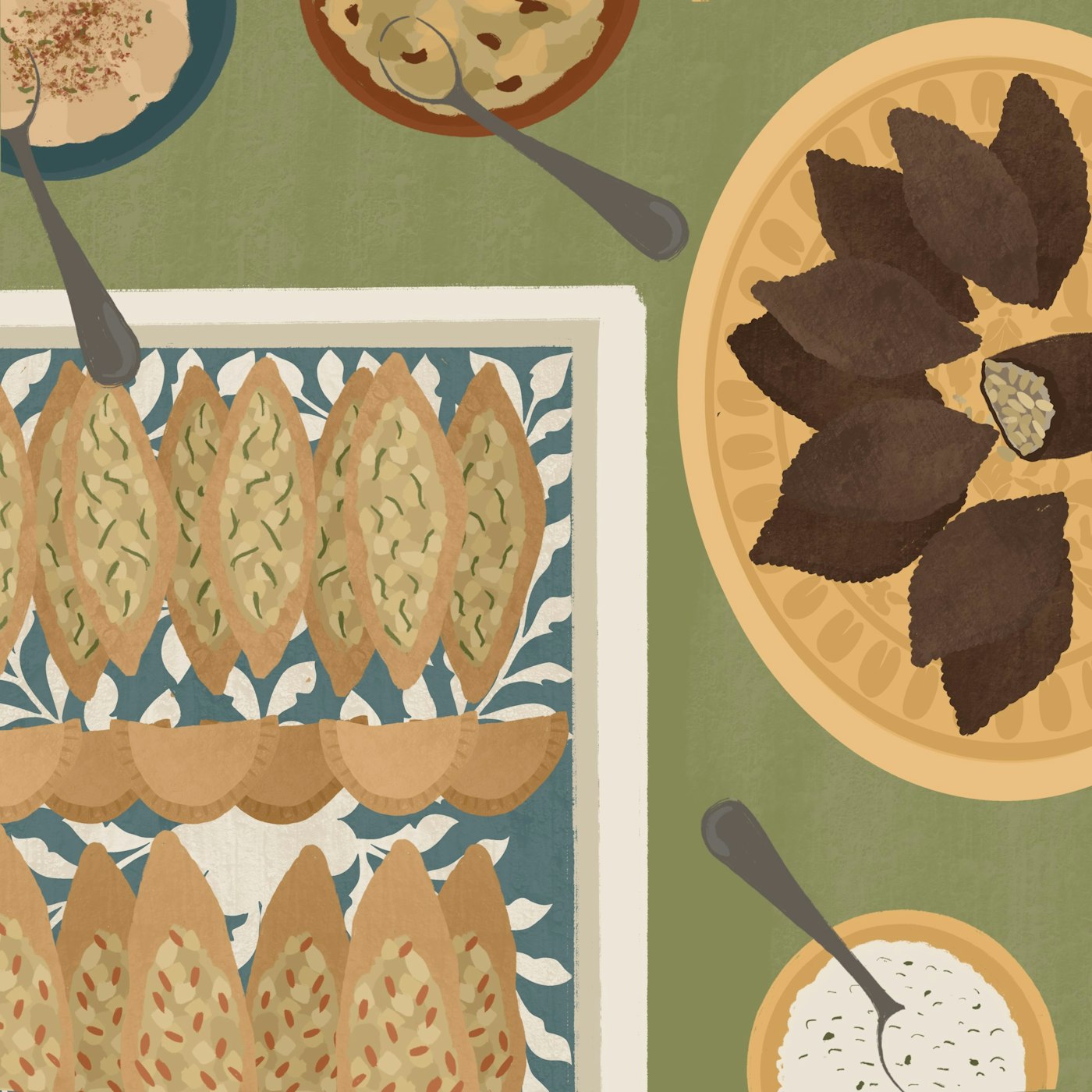
A variety of Syrian pastries, dips and Kibbeh are usually served at gatherings.
Ranya: Can you tell us about hospitality in Syrian culture? How would you host guests?
Nada: Syrians are a very hospitable people. The host is expected to offer guests food, even if the visit is short and they are not coming for food. My mum would always cook more than enough for our family because she always said someone might pop by, or our dad might bring someone home with him from work. Anything we had at home we would offer our guests. When we invite people we would make an effort to make a colourful table with many dishes, but these could be very simple dishes, or things we already have in the fridge.
Whether we make something special or we use what we have, we always offer people food, especially if they come around lunch or dinner time; there’s no way they can leave the house without being fed!
If I were hosting guests, there are certain dishes that are typical to make. Kibbeh has to be on the table, this is a small parcel made from bulgur and minced meat, stuffed with more minced meat and pine nuts and then fried. We also like to have a lot of starters: different types of salads, hummus and Mutabbal. Mutabbal is a tasty dip made from grilled aubergine, tahini, yoghurt and garlic.
Ranya: What is your favourite Syrian dish to cook and why?
Nada: My favourite Syrian dish to cook Mlookhiye. This is a stew made from jute leaves, chicken and lots of garlic and coriander. The dish has some great memories attached to it, when we’d come home from school as children it would make my day when I would smell it and know my mum made Mlookhiye. Until now I love the smell and it brings back these memories. I also love Sheikh al Mahshi, which is a dish made of fried courgettes stuffed with minced meat, cooked in a warm yoghurt sauce with garlic and coriander.
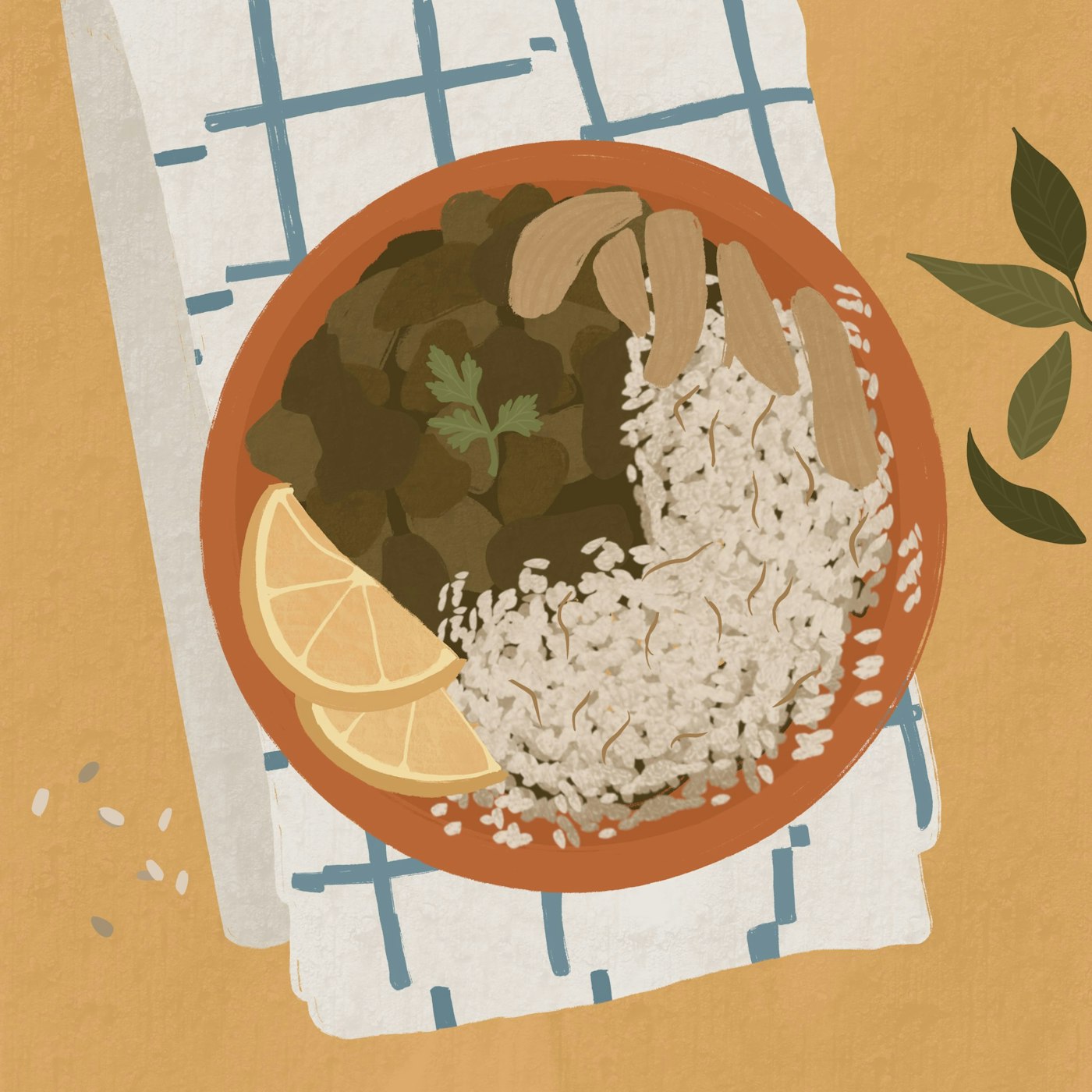
Syrian Mlookhiye served with shredded chicken and rice is a typical comfort food eaten in Syrian homes. Illustration by
Many Syrian dishes remind me of home and they remind me mainly of my childhood, my city, my mum, my grandparents. Each dish reminds me of someone in my family. The smell of the food reminds me of Damascus when we’d walk in the roads and smell the cooking coming from the restaurants and homes. In our block of flats, I’d smell the different foods people were making and guess what my neighbours were having for dinner. Syrian dishes bring back memories of a good childhood for me.
Ranya: Anything else you would like to add or tell us?
Nada: Syria is more than me, I want to highlight that Syrian women and men are very talented. Many love cooking and cook a lot and not just to feed themselves and others, but because they love it.
Syrians became scattered all over the world after the uprising turned to a war, but many have opened restaurants and added from our culture to the communities and societies that they are new to in Europe, USA, Canada and other places.
Wherever they go they have kept their touch and special flavour of food. They are well known for how clean they are and how generous and hospitable too, they are successful wherever they go.
I love cooking, when I cook, I cook with love because I want people to taste this food. But I am not cooking for my family or guests just out of duty, but because I love and respect them, and when I cook homemade food for someone, I am making an effort for them as they are special to me. When it is homemade it is different, and people appreciate it no matter how simple it is.
How Have You Engaged With the Crisis?
For Fatima Sabouni, Syria was the backdrop of her childhood up until 2012, when the war began and she lost her home. For Fatima, the single story of Syria, that being “images that focus on the injury, suffering and death of Syrian adults and children, and the destruction of Syrian cities,” has not only impacted the outsiders’ perception of the country but also stunted healthy mourning processes on an individual level.
Her video of family moments in Syria asks us all to rethink how we have engaged with the crisis.
*Every now and then we partner with companies to bring you sponsored content, this helps us keep going at Amaliah. We always strive to ensure we maintain the same editorial integrity that keeps you engaged in our non-sponsored content. We thank you for your support.
Amaliah Team
This article was written by a member of the Amaliah team or a collective team effort. You can follow us on @amaliah_tweets for the latest or head over to our Instagram @amaliah_com. If you're reading this and are thinking about contributing an article then send us an email with a brief or a full article to contribute@amaliah.com
